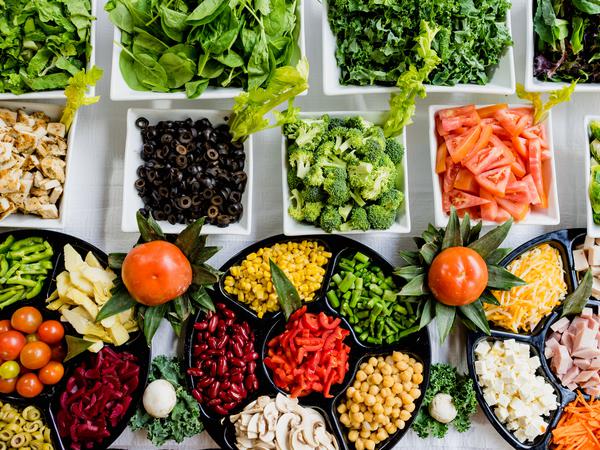All about complementary feeding and introduction of complementary feeding
I got to know Franziska during my training as a breastfeeding companion(DAIS) last year. She not only assists with breastfeeding, but also with the topic of complementary feeding. Her studies in ecotrophology support her professional knowledge. Now she has written me an article on various complementary feeding issues. (Natalie)
When is the right time to introduce complementary feeding?
While in the course of the last century, for various reasons, the trend was towards earlier and earlier complementary feeding and the replacement of whole solid milk meals, today experts at least agree: complementary feeding before the completed 4th month of life/beginning of the 5th month is not only not necessary, but can even be harmful due to the immaturity of the digestive tract.
Specifically, the WHO recommends for industrialized countries that children be exclusively breastfed for the first 6 months and then continue to be breastfed alongside appropriate solid foods until their 2nd birthday or beyond. The European recommendations of ESPGHAN (European Society for Pediatric Gastroenterology, Hepatology and Nutrition) are a little more relaxed about "about 6 months" until complementary feeding.

But since German children are particularly fast and particularly great, our babies are supposed to have their first milk meal replaced by porridge after only 4 months. At least that's what you would think if you read some brochures. The fact that this is the case has various reasons, which would go beyond the scope of this article.
Well then, when it comes to official national recommendations, one should stick to the recommendation of the federal initiative "Healthy into Life". Various institutions, including those independent of industry, have contributed to this. There is talk of starting complementary feeding between the 5th and 7th month of life. What is often forgotten is that the individual maturity of the child should also be taken into account here and not XY deadline.
Today, the argument with the start after the 4th month (i.e. the beginning of the 5th month) is that one also wants to take into account the babies who are already ready at an early age. I can live with that explanation. After all, anyone who has ever had anything to do with babies usually realizes very quickly that their development sometimes takes place in very generous time windows and that not everyone is at the same stage at the same time.
In principle, for a healthy, mature child, exclusive feeding with breast milk or pre-nutrition during the first six months of life is completely sufficient. Introducing complementary foods before this does not bring any advantages for the supply. On the contrary, babies who are fed supplementary food earlier, and thus come into contact with a new germ world sooner, are more likely to get infections.
Early supplementary feeding also shortens the total breastfeeding time on average, while infants still benefit from breast milk in terms of health (as do mothers from a longer breastfeeding period).
Everything you need to know about introducing complementary feeding in my online course
I have created an online course for the introduction of complementary feeding. You can book it on my website and participate whenever you want. For more information, see my online course on complementary feeding.
What are the complementary food signs?

Unicef has described fairly recognizable external signs of maturity for this: The tongue thrust reflex has disappeared, the child can sit upright for the duration of a meal with slight support in the lower back, and they can independently bring food to their mouth with their hand. It is believed that this external maturity is also associated with sufficient development of the digestive tract to now process solid foods, and premature introduction of complementary foods can promote short-term digestive problems and long-term intolerances.
In addition, these abilities also represent protective mechanisms. The tongue thrust reflex is intended to prevent a baby from putting anything in its mouth or even swallowing something that it cannot yet handle. Anyone who has ever choked while eating or drinking in a semi-recumbent position knows how important an upright sitting posture is for independent coughing up. The child's ability to put things in its mouth also allows it to control what, how much and how quickly something ends up in it.
To go by these visible characteristics of eating ability seems to make a lot of sense to me. Calendars are more of a recent invention, and it's safe to assume that nature didn't set things up this way for nothing, when the baby on our lap snatches the sandwich out of our hand, bites it off and then cheekily swallows it.
Here it is certainly necessary to weigh the recommendation for Max Musterkind against the needs of one's own. The opposite is also true if the magic 6-month mark has now been exceeded, but the child is not yet sitting so stably or simply has no interest in eating. It has been proven that the time at which a baby is ready to eat follows a normal distribution. This means that most babies are not really ready for complementary foods until they are about 6 months old, and for most of them the stores of certain nutrients begin to run low at this time and need to be supplemented in addition to breast milk (although this happens slowly and not all at once). However, for some this happens a little earlier, for others it happens later.
The signs, which according to grandma's tradition clearly show that the child needs "something right", should rather not be used for your assessment. It peeks food into your mouth and makes chewing movements. This is pretty much true for every baby around the 3rd-4th month. The little ones are now able to observe and imitate us, their big role models, really closely.
Most babies at this age, however, will also quickly carry food you put in their mouths out again and would also be satisfied with a pretty shiny spoon to suck on. If you push extra liquid porridge with the spoon over the tongue thrust reflex while half lying down, you can get around this problem, but it is not recommended. The fact that a child at this age demands breast/bottle feeds more often or more milk overall is not an indication that he or she is no longer satisfied by these alone and needs additional solid food. The child can continue to meet its additional needs during such developmental spurts with its usual food.
If the child is age-appropriate and healthy, you should remain relaxed. If there is still no real interest in solid food at 9/10 months, although the child has sufficient access to it, it makes sense to have the iron and, if necessary, zinc status determined (please not only the Hb value). Low stores can lead to loss of appetite and would then be treated with supplements rather than complementary foods.
Another reason could be a restriction in the oral cavity (e.g. a shortened lingual frenulum), which may have already led to difficulties with breastfeeding or drinking from the bottle. If none of these is the case, there are also (rarely) children who are perfectly healthy, but who are simply not interested until their 1st birthday and yet are still sufficiently supplied with milk.
What is the right baby food?
What the baby should eat now, the WHO is quite unspecific. Since this has worked out quite well for most of human history, it only recommends offering suitable foods that are common in the respective country several times a day from the age of 6 months. These should be nutrient- and energy-rich and of such a nature that they correspond to the current abilities of the child.
Whether this is mashed, soft-cooked, to be scraped off with the first teeth, spoon-fed, mouth- or hand-to-mouth-fed, or eaten independently, is for the parents to decide.

"Healthy into Life" continues to adhere to the "porridge schedule," according to which different porridges are introduced in a specific sequence at the main meals about every month. (This plan has long been "proven" for infant feeding in Germany, though that is also the only reason it continues to be maintained. Other industrialized nations follow different formulae with different foods).
In addition however also chunky food is to be offered to the baby from the outset to eat itself. And if one inquires times directly with the initiative, one gets even a rather relaxed answer, to the self meal let "small Breiverweigerer".
Everyone agrees that breast milk or infant formula should continue to be fed as needed in addition to complementary feeding. A calm, distraction-free atmosphere should prevail at mealtime, it should also be encouraged to eat, but the child's hunger and satiety signals should be taken into account.
So however you want to handle it, for some parents it is more relaxed to have concrete guidelines such as the porridge plan and perhaps also the possibility to buy ready-made porridge meals. Others feel wonderfully free if they simply let the baby take part in the family meals and have a snack for everyone on the way.
Here again, however, everyone's needs should come together as much as possible. That a baby is not forced to eat porridge because "babies just have to eat porridge." Just as babies are not allowed to be fed sometimes when they want to or not allowed to eat mushy foods in baby-led complementary feeding/baby-led weaning (BLW) are persistent misconceptions.
Basically, complementary feeding is a field where a lot of unsubstantiated "we've always done it that way," with (educational) dogmas, parents' wishes for "good eaters," early weaning, etc. clash. Some children see being fed as a service of loving care, others feel that their need for autonomy is being curtailed and would rather have what everyone else is eating.
No matter which form of complementary feeding you want to choose or a combination, it makes sense to take another look at the respective "concept". But then again to be with your child, its individual development and needs. And to deal with a healthy diet for all. Because in the long run, every child eats at the family table and is oriented to our eating habits.
Image sources:The cover image comes from pixabay.com.
The image in the article comes from unsplash.com.
The image in the article comes from unsplash.com.
No comments yet.